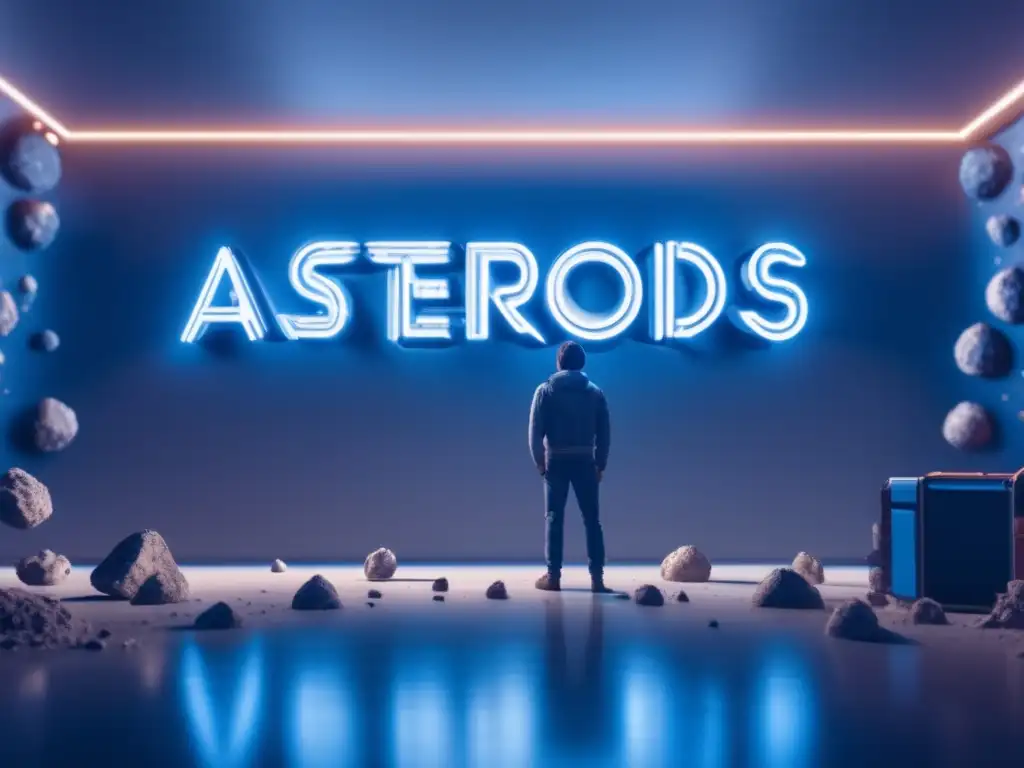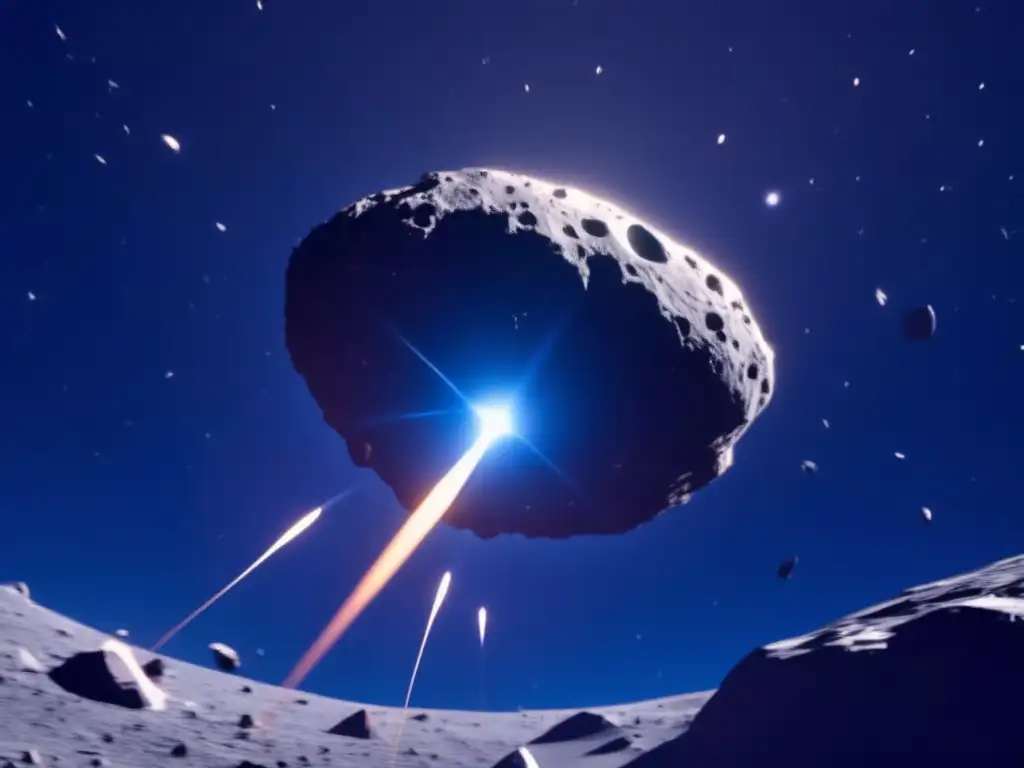Keeping Earth Safe: The Science Behind Asteroid Defense

Introduction
Asteroids are often seen as fascinating celestial objects, but they can also pose a serious threat to our planet. When an asteroid collides with Earth, it can cause widespread destruction and even extinction-level events. Although the likelihood of an asteroid impact is low, the consequences of such an event could be catastrophic. Therefore, scientists are constantly exploring ways to protect Earth from these potential hazards.
The Nature of Asteroids

What Are Asteroids?
Asteroids are small, rocky objects that orbit the sun. They are remnants from the formation of the solar system, and most of them are located in the asteroid belt between Mars and Jupiter. However, some asteroids have orbits that bring them closer to Earth, making them a potential threat.
Types of Asteroids
The three main types of asteroids are carbonaceous, silicaceous, and metallic. Carbonaceous asteroids contain water and organic materials, while silicaceous asteroids are made of rock and metal. Metallic asteroids are mainly composed of iron and nickel.
Size and Speed of Asteroids
Asteroids can range in size from small boulders to large objects hundreds of kilometers across. They can also travel at speeds of up to 20 kilometers per second, making them difficult to detect and intercept.
The Need for Planetary Defense

Potential Impact Scenarios
Scientists have identified numerous asteroids that could potentially collide with Earth. While most of these asteroids are small and would not cause significant damage, larger asteroids could have catastrophic consequences. For instance, the impact of a 10-kilometer-wide asteroid could cause global devastation, including tsunamis, wildfires, and a dust cloud that would block out the sun for years.
Challenges of Asteroid Defense
The main challenge of asteroid defense is identifying and tracking potentially hazardous asteroids. While scientists have made significant progress in detecting and cataloging asteroids, there are still many objects that remain undiscovered or poorly understood. Additionally, intercepting an asteroid would require a great deal of energy and precision, as even a small miscalculation could cause the asteroid to miss its intended target or break into smaller pieces that could still pose a threat.
Asteroid Defense Technologies
There are several technologies currently being developed for asteroid defense. One approach is to use a spacecraft to deflect the asteroid's trajectory. This could be done by crashing a spacecraft into the asteroid or by using a gravity tractor to slowly alter its orbit. Another approach is to destroy the asteroid using a nuclear weapon or other explosive device. While this approach could be effective, it would also create a lot of debris that could potentially cause more damage than the asteroid itself.
Current Planetary Defense Efforts

Asteroid Detection
Scientists around the world are constantly searching for new asteroids and tracking their orbits to determine whether they pose a threat to Earth. Many organizations, such as NASA's Near-Earth Object Program and the European Space Agency's Space Situational Awareness Program, are dedicated to this effort.
Asteroid Deflection Technology Development
Several organizations, including NASA and the European Space Agency, are actively developing technologies for asteroid deflection. These technologies are being tested in simulations and could be deployed if a hazardous asteroid was identified.
International Cooperation
The threat of an asteroid impact is a global concern, and international cooperation is essential for effective asteroid defense. Organizations such as the United Nations Committee on the Peaceful Uses of Outer Space and the Asteroid Day Foundation are working to promote collaboration and raise awareness of the threat posed by asteroids.
Frequently Asked Questions

-
How often do asteroids collide with Earth?
Asteroid impacts on Earth are rare, with only a few known impact events in recorded history. However, the consequences of a large impact could be catastrophic.
-
Can we detect all potentially hazardous asteroids?
No, there are still many asteroids that remain undiscovered or poorly understood. However, scientists are constantly working to improve detection methods and catalog the objects in our solar system.
-
How would we deflect an incoming asteroid?
There are several technologies being developed for asteroid deflection, including using a spacecraft to crash into the asteroid or to use a gravity tractor to alter its orbit.
-
What is the likelihood of an asteroid impact in the near future?
The likelihood of an impact in the near future is relatively low, but the consequences of such an event could be catastrophic.
-
What can I do to help protect Earth from asteroid impacts?
While there is little an individual can do to prevent an asteroid impact, raising awareness of the threat and supporting organizations dedicated to asteroid defense can help promote effective planetary defense efforts.
Conclusion
Asteroids pose a serious threat to our planet, but with careful planning and cooperation, we can work to protect Earth from these potential hazards. Scientists are constantly developing new technologies for asteroid defense, and international collaboration is essential for effective planetary defense efforts.
At Asteroid Realm, we are dedicated to educating the public about the science behind asteroid defense and promoting awareness of this important issue. Join us in our mission to keep Earth safe from asteroids.
Additional Resources

- NASA Planetary Defense website
- ESA Asteroid Escape Plan
- Asteroid Day Foundation
- Space.com Asteroid Defense News
 Galactic Guard: Techniques In Planetary Defense
Galactic Guard: Techniques In Planetary Defense Stopping The Space Rocks: The Future Of Asteroid Defense
Stopping The Space Rocks: The Future Of Asteroid Defense Defenders Of The Solar System: Asteroid Defense Strategies
Defenders Of The Solar System: Asteroid Defense StrategiesIf you want to discover more articles similar to Keeping Earth Safe: The Science Behind Asteroid Defense, you can visit the Planetary Defense category.
Leave a Reply

Articulos relacionados: